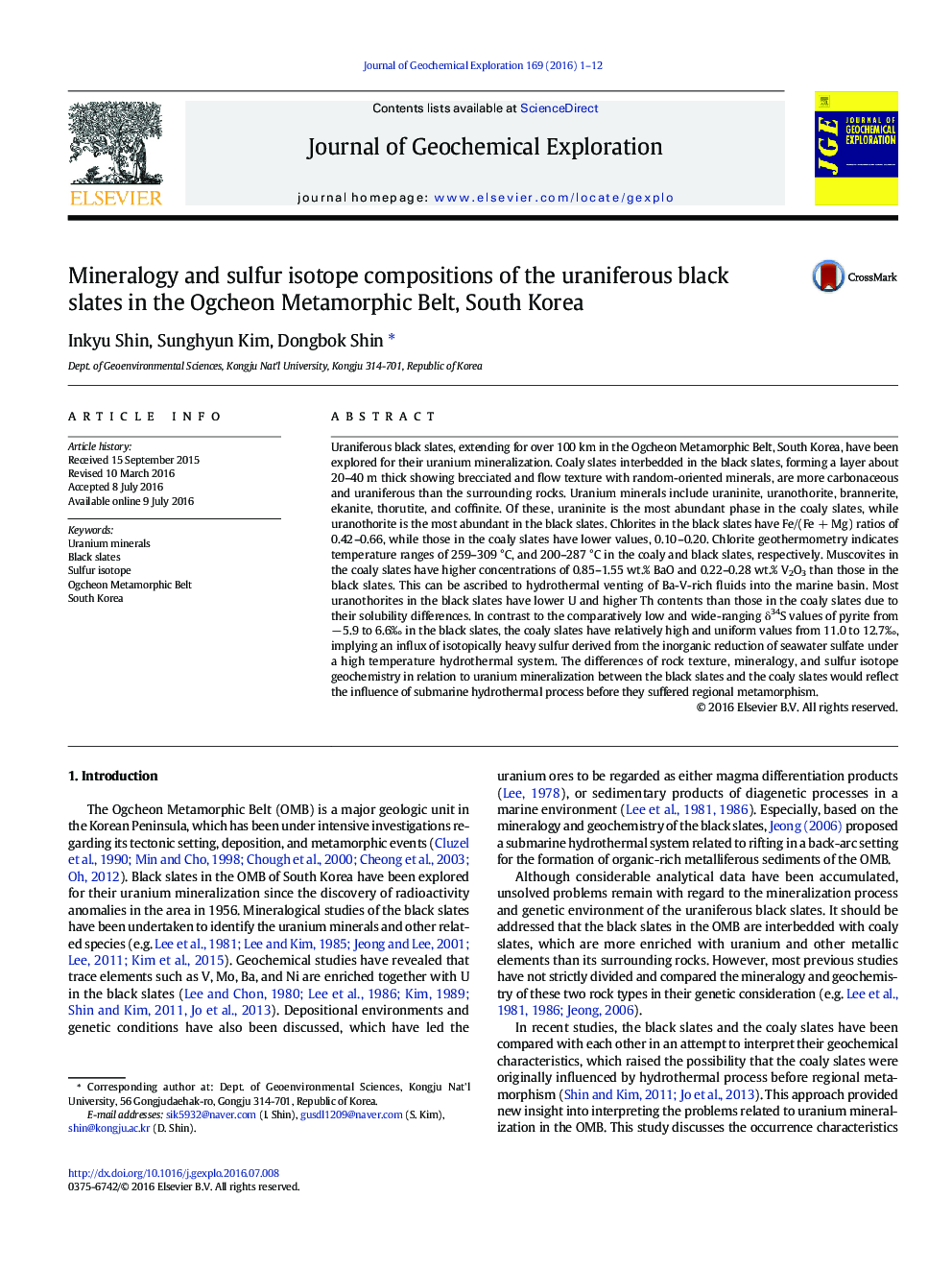| کد مقاله | کد نشریه | سال انتشار | مقاله انگلیسی | نسخه تمام متن |
|---|---|---|---|---|
| 4456897 | 1620890 | 2016 | 12 صفحه PDF | دانلود رایگان |

• Black slates and interbedded coaly slates were compared in their uranium mineralization characteristics.
• Uranium and associated mineral chemistries were analyzed and discussed.
• Sulfur isotope compositions were evaluated in the determination of fluid sources.
• Genetic environments were discussed and compared to other similar deposits in the world.
Uraniferous black slates, extending for over 100 km in the Ogcheon Metamorphic Belt, South Korea, have been explored for their uranium mineralization. Coaly slates interbedded in the black slates, forming a layer about 20–40 m thick showing brecciated and flow texture with random-oriented minerals, are more carbonaceous and uraniferous than the surrounding rocks. Uranium minerals include uraninite, uranothorite, brannerite, ekanite, thorutite, and coffinite. Of these, uraninite is the most abundant phase in the coaly slates, while uranothorite is the most abundant in the black slates. Chlorites in the black slates have Fe/(Fe + Mg) ratios of 0.42–0.66, while those in the coaly slates have lower values, 0.10–0.20. Chlorite geothermometry indicates temperature ranges of 259–309 °C, and 200–287 °C in the coaly and black slates, respectively. Muscovites in the coaly slates have higher concentrations of 0.85–1.55 wt.% BaO and 0.22–0.28 wt.% V2O3 than those in the black slates. This can be ascribed to hydrothermal venting of Ba-V-rich fluids into the marine basin. Most uranothorites in the black slates have lower U and higher Th contents than those in the coaly slates due to their solubility differences. In contrast to the comparatively low and wide-ranging δ34S values of pyrite from − 5.9 to 6.6‰ in the black slates, the coaly slates have relatively high and uniform values from 11.0 to 12.7‰, implying an influx of isotopically heavy sulfur derived from the inorganic reduction of seawater sulfate under a high temperature hydrothermal system. The differences of rock texture, mineralogy, and sulfur isotope geochemistry in relation to uranium mineralization between the black slates and the coaly slates would reflect the influence of submarine hydrothermal process before they suffered regional metamorphism.
Journal: Journal of Geochemical Exploration - Volume 169, October 2016, Pages 1–12